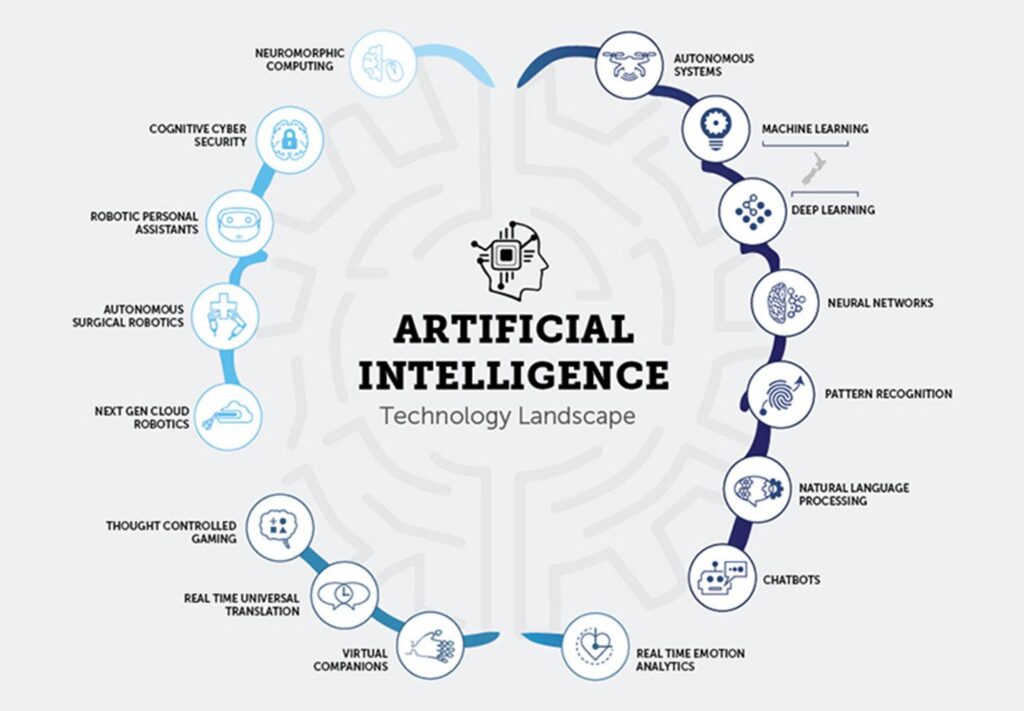AI stands for Artificial Intelligence, which refers to the ability of machines and computers to mimic or simulate human intelligence, such as learning, reasoning, and problem-solving. Artificial Intelligence studies the patterns of the human brain. It analyzes the cognitive process to make a computer, computer-controlled robot, or software think intelligently like the human mind. Studies in this field develop intelligent software and systems.

Types of AI
There are four types of artificial intelligence, namely Purely Reactive, Limited Memory, Theory of Mind, and Self-Aware. Purely Reactive machines do not have any memory or data to work with. It also specializes in just one field of work. In a chess game, for instance, the machine observes the moves and makes the best possible decision to win. Limited Memory machines collect previous data and continue adding it to their memory. This memory is minimal, but enough to make proper decisions. These machines can suggest a restaurant based on the location data. Theory of Mind AI can understand thoughts and emotions, as well as interact socially. Finally, Self-Aware machines, the future generation of these new technologies, will be intelligent, sentient, and conscious.
How does AI work?
Artificial Intelligence works by combining large amounts of data with intelligent, iterative processing algorithms. The system learns from the patterns and features in the data. Each round of processing tests and measures its performance, using the results to develop additional expertise. There are different ways to implement AI, including machine learning and deep learning.
Machine learning uses algorithms to discover patterns and generate insights from the data, while deep learning mimics the neural network of the human brain, making sense of patterns, noise, and sources of confusion in the data.
Deep learning works by using input, hidden, and output layers. The input layer receives the images to segregate. Then, the hidden layers perform mathematical computations and feature extraction on the inputs. Multiple hidden layers add complexity to the data and improve accuracy. The output layer gives the segregated photos. AI can make predictions based on patterns in the data it has learned.
History of AI
AI’s evolution can be traced back six decades. The first AI conference was held in 1956, where John McCarthy coined the term ‘artificial intelligence.’ The first general-purpose mobile robot, Shakey, was built in 1969. In 1997, IBM created the supercomputer ‘Deep Blue,’ which defeated the world champion chess player in a match, marking a significant milestone. Then in 2002, the first commercially successful robotic vacuum cleaner was created, and from 2005-2019, several other innovations such as speech recognition, robotic process automation (RPA), and smart homes also made their debut. In 2020, Baidu released the LinearFold AI algorithm that can predict the RNA sequence of the virus in only 27 seconds, aiding medical and scientific teams in developing a vaccine during the early stages of the SARS-CoV-2 (COVID-19) pandemic.
Applications of AI
Companies are continually introducing new ways of interacting with machine-learning technology, affecting how we live and work. For instance, DeepMind Technologies created a Neural Turing Machine, allowing computers to mimic the short-term memory of the human brain. IBM uses Watson, a question-answering computer system, in the medical field to suggest various kinds of treatment based on patients’ medical history. AI also detects banking fraud, automates online customer support and voice messaging systems, and uses machine learning algorithms and sample data to detect anomalies, adapt, and respond to cyber threats. Virtual assistants like Siri, Cortana, Alexa, and Google follow users’ commands, collect information, interpret questions, and supply answers based on fetched data.
Google and Tesla introduced AI into the automotive sector through driverless cars and Autopilot features, respectively. These virtual assistants collect information, interpret user commands, and provide answers based on fetched data while gradually improving and personalizing solutions based on user preferences.
Future of AI
The future of AI looks promising, as researchers and developers continue to innovate and create new applications for AI technology. With advancements in machine learning, deep learning, and neural networks, AI will also continue to revolutionize industries. Then like healthcare, transportation, and finance. In the future, we can expect to see more personalized and efficient services, as AI becomes better at understanding and predicting our behaviors and preferences. However, there are also concerns about the potential impact of AI on jobs and privacy. It is important for us to continue to have ethical discussions about AI and its implications, to ensure that it is used for the benefit of humanity. Overall, the future of AI is bright, but it is important for us to proceed with caution and responsibility.
